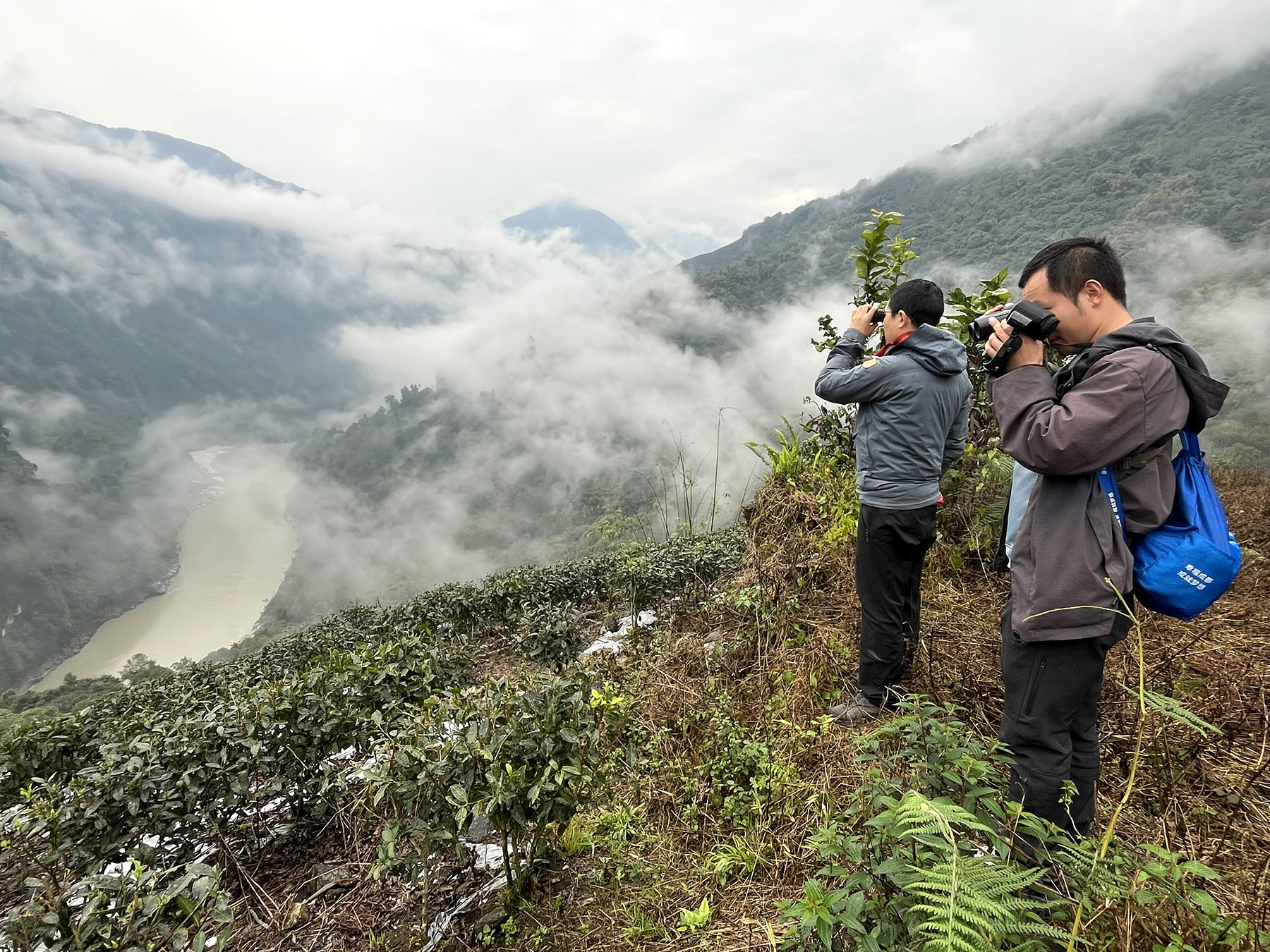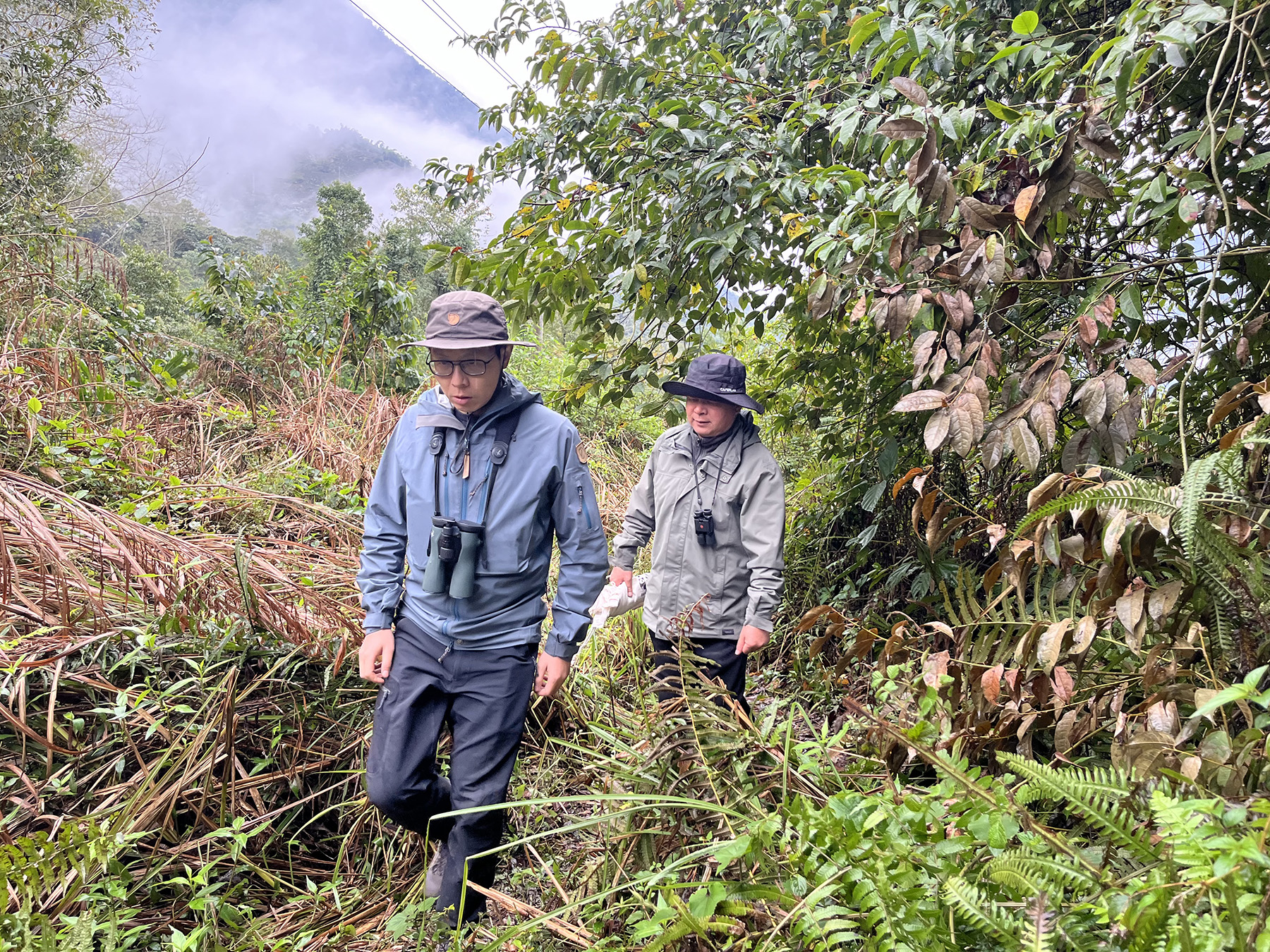Blood samples taken in unspoiled Xizang could unlock details surrounding future discoveries of new and unique species in the area

The remote Metog county on the southeastern edge of the Xizang autonomous region is known for being the very last county in China to be connected by road. The rugged area is also known for its rich and somewhat untapped biodiversity, and this is why ornithologists like Chen De and Que Pinjia visit to conduct wildlife surveys.
Inclement weather hampered their most recent fortnight-long survey last month, but despite the rain and the fog, the team of eight cracked on with their task in the hope of discovering unique species never before observed by humankind.
Metog is truly at the front line of discovery for us. It has a great potential to add new members to the country’s family of birds.
Chen De, associate professor from Beijing Normal University
For Chen, an associate professor from Beijing Normal University, the rain and colder weather meant that fewer birds would be in the area this time, and that they'd have to react faster in the cold when catching each bird. Despite this, he set up his wafer-thin "mist nets" around various sites in the hope of snagging a first.
READ MORE: Baiyangdian brought back to life in Hebei
The nets are practically invisible to the human eye and are designed to minimize harm to the birds.
"The cold weather might have led to more casualties in the nets," said a concerned Chen. "So we had to visit the net sites more frequently to extract birds from them."
For Que, a researcher from the Chengdu Research Base of Giant Panda Breeding and the Sichuan Key Laboratory of Conservation Biology for Endangered Wildlife, the bad weather was also going to impede this year's survey.
"Birds hide in bad weather and become silent," Que said."In such conditions, you can often wonder where all the birds have gone."
Long-term interest
The pair has focused on Metog, an area known for its rich biodiversity, since studying for their doctorates at Beijing Normal University, inspired by their mentor, Zhang Zhengwang, one of the country's leading ornithologists.
Researchers from the university, including the two, have made several discoveries in Metog, including uncovering new records of birds for the country and the region, and have published research papers on the area's avian wildlife. "Metog is truly at the front line of discovery for us," Chen said."It has a great potential to add new members to the country's family of birds."
Joining Chen and Que were three of their students and three freelance surveyors.
To make sure that their two-week survey made the best of a bad situation, various methods were employed to survey the skies.
Besides using mist nets for catching, measuring and collecting DNA samples of wild birds, they also counted birds along roads.
The team, split into two, and traveling in four-wheel drives, set out on their respective tasks. Chen and the students focused their work on using mist nets for the survey. The three surveyors, Guo Dongsheng, Huang Ke and Li Bin, drove to different elevations along different routes to conduct their bird surveys.

Net duty
According to Chen, using mist nets is an essential method in conducting avian studies as it enables researchers to closely inspect and gather data on birds' health condition, age and gender and blood samples for further research.
Chen's research primarily centers on employing genomic and molecular methods to address various ornithological questions such as speciation and species divergence.
"Many bird species distributed in southeastern Xizang show distinctions from their counterparts in other parts of the country," he said."Historically, ornithologists would often classify a bird species found in the area as the southeastern Xizang subspecies of the species, mainly based on morphological variations.
"Genetic analysis allows us to determine whether two birds of the same species, previously regarded as distinct subspecies in two separate regions, are in fact two distinct species," he said. "Through genetic evidence, we can elevate a subspecies to the status of a new species. A small vial of blood collected from the birds can provide us with the means to conduct this type of research for many years to come."
Correct classification of a species is highly important to conservation, he added.
For example, after researchers upgraded the peacock pheasant distributed in Hainan province to a full species, named the Hainan peacock pheasant, based on genetic evidence in 2008, conservationists found it was already extremely rare on the island and immediately put the bird into the International Union for the Conservation Nature Red List as an endangered species.
The decision was made to base the survey in Drepung township, about 30 kilometers from the county seat of Metog, with an elevation of less than 1,000 meters.
Drepung, sometimes spelled in pinyin as Beibeng, is a gateway to many villages scattered over the county's 31,000 square kilometers.
"Given the chilly weather, we thought that most of the birds might still be lingering in the warmer, lower elevation areas, delaying their altitudinal migration to higher terrains,"Chen said.
From Drepung, Chen and his students drove to different areas to find survey sites- usually remote corners not far from roads but with few humans -to set up mist nets. They inspected every site regularly, eagerly anticipating the capture of wild birds in the nets and promptly extracting them.
"We monitored four net sites a day," said Wang Hui, a postdoctoral student. "More and it would have been too much work to handle."
They got up every morning at 7, and after breakfast they visited the net sites in turn. Each site would be visited four times a day, once in the morning, once around noon, once in the afternoon and once in the early evening.
Upon arriving at a net site, they would try to release the birds trapped in the nets as soon as possible and safely put them into sacks.
After a tour of the four net sites, they would return to their hotel and identify the birds, measure them, write their information in a log book and collect blood samples before releasing them.
"It was a truly tight schedule," Chen said. "Sometimes, we actually felt fortunate to see only several birds trapped in the nets at a site."
As well as having to work quickly, extracting the birds from the nets was no easy task."One day, there was a whole troop of white-breasted parrotbills, nearly 20, trapped in nets at a site," Wang said. The sparrow-sized birds move in groups and are known for their robust beaks.
"When we tried to free the birds from the nets, they pecked at us, which was truly painful," she said.
During their stay in Metog, the team set up mist nets at 10 locations, caught more than 70 species and collected blood samples from each species.

Roadside lookouts
Arriving in Metog on March 12, Que joined the three surveyors in the second unit for their fieldwork. To make it easier to find birds, he brought with him two thermal scopes.
While driving, Que would use one to scan forest canopies from the front seat, and Huang would use another to scan from the back.
Upon finding something that looked like a bird or a mammal, they would stop and search the canopy carefully.
Despite the help of the devices, the bird count was still quite tricky.
They did however encounter some bird waves — large numbers of birds gathering, flying together in harmony, and feeding in a mixed flock within the canopies- from time to time.
However, compared with other seasons, these bird waves were notably smaller and primarily composed of smaller birds such as warblers, tits, babblers and sunbirds.
Every day from early morning to late evening, the four drove along a different road, thus venturing into various parts of Metog. Thanks to the country's initiative to link every village with a paved road, they could traverse routes spanning over 30 to 40 km daily.
"With improved road access, we had the opportunity to explore several parts of Metog that I hadn't been able to visit during the past three surveys,"Que said.
Besides driving, they also chose a few sections of the road to walk while counting birds. The sections are referred to as "line transects" and are one of the basic methods used in bird surveying.
"We conducted more than 20 line transects during our two weeks in Metog," Que said.
After a long and uneventful day on March 18, Que and Huang spotted a male Sclater's monal pheasant, a turkey-sized bird known for its highly iridescent purplish-green plumage, feeding on a snow-covered patch of open ground in a forest of pine trees. The bird was spotted across a valley on a steep slope nearly 100 meters away from the two observers.
Exclusively found in the alpine zones of the east Himalayan region and under national first-class protection, it was a bird neither of them had ever seen before. Overwhelmed by the discovery, they spent a good 10 minutes admiring it.
"This is one of the targets I'd been hoping to find during the survey," Que said. "It's a small reward for our long and exhausting survey."
ALSO READ: Raptor rescuer keeps birds of prey under her wing
Despite managing to count more than 130 bird species during the survey, Que said, the list was considerably shorter compared to those recorded in the previous surveys.
Wetter and colder days, disruptions caused by road construction and the clearing of roadside thickets were probably the main reasons behind the lower bird count, he said.
"Next time, in another season and after the road construction is finished and the thickets return along the roads, the count might be quite different," Que said. "That's why we expect to find funding support to continue our work in the area in the future."
Chen advocates for the establishment of a permanent bird tagging station in Metog, highlighting its significance for ongoing avian research. According to him, bird tagging is one of the oldest but most important techniques used for studying and identifying individual birds.
"By engaging in year-round bird tagging and recapture efforts here, I'm sure we will achieve many more discoveries," he said.


